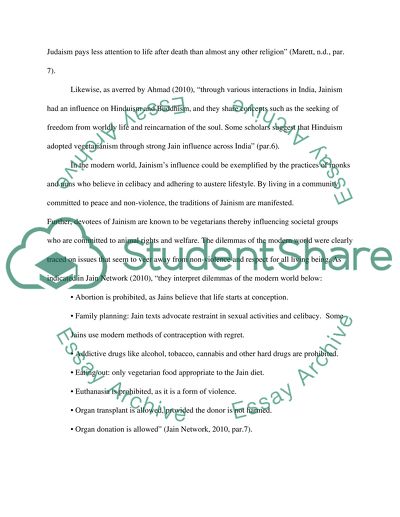Contemporary Issues in Eastern Religion - Jainism Research Paper. Retrieved from https://studentshare.org/miscellaneous/1574539-contemporary-issues-in-eastern-religion-jainism
Contemporary Issues in Eastern Religion - Jainism Research Paper. https://studentshare.org/miscellaneous/1574539-contemporary-issues-in-eastern-religion-jainism.


